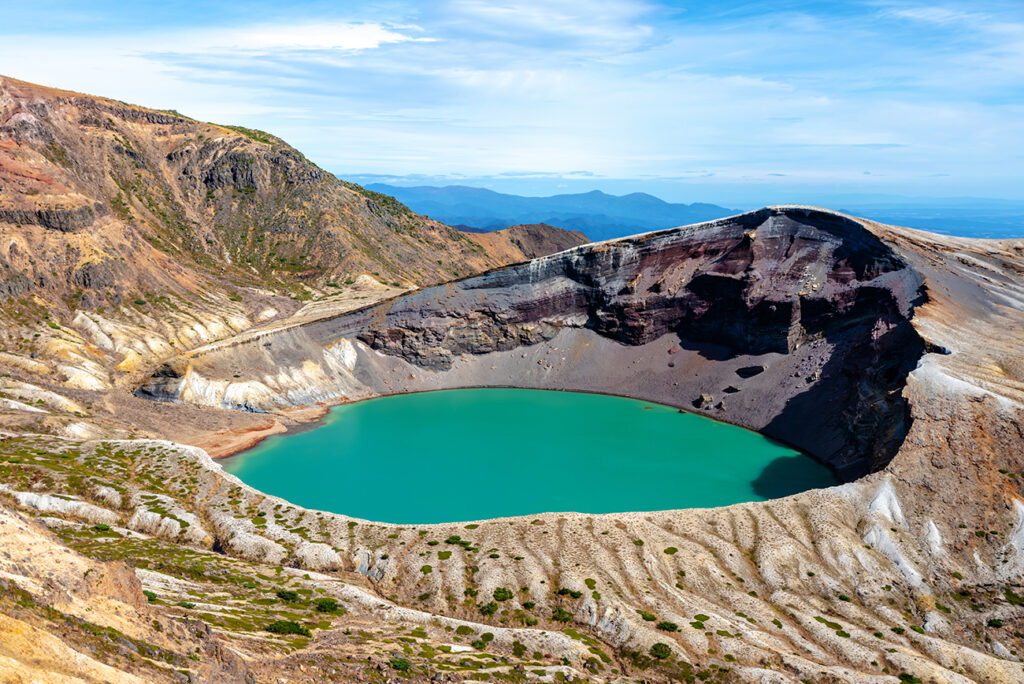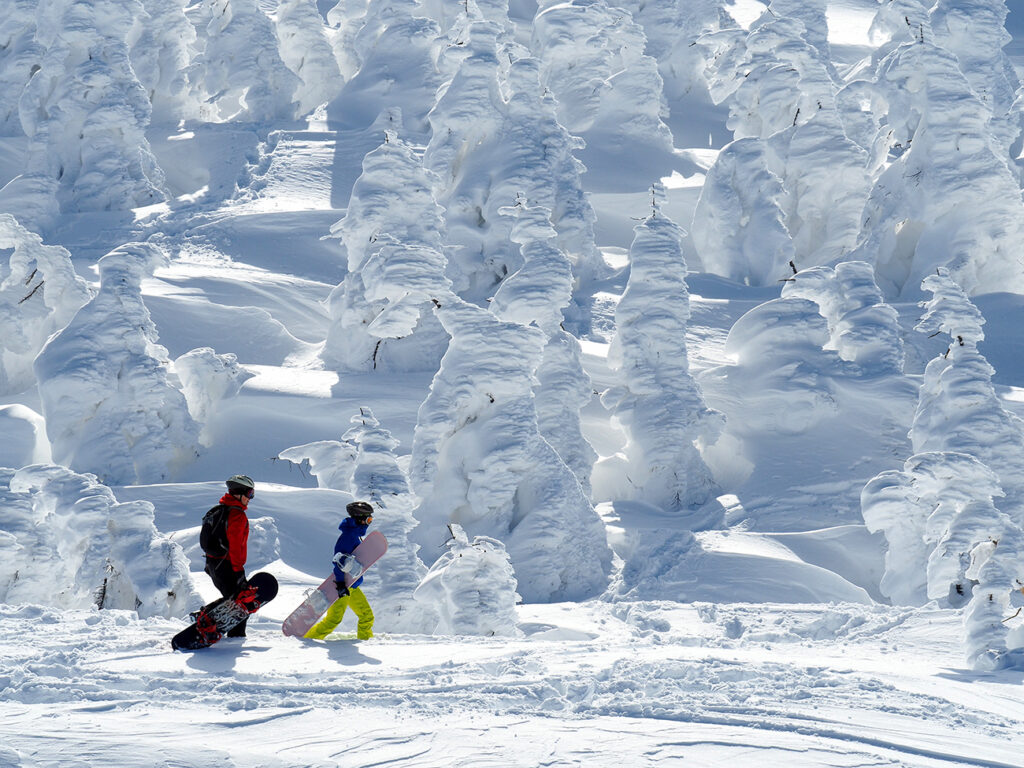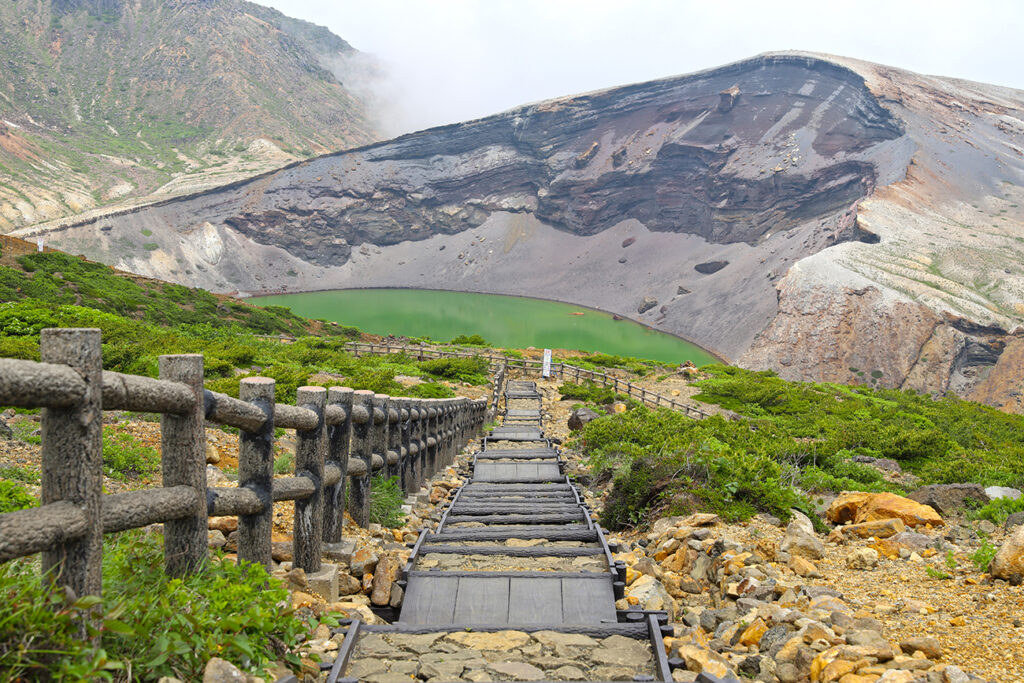
The Stunning Okama Crater in Mount Zao
Mount Zao is famed for its enchanting winter landscapes, situated on the border between Yamagata and Miyagi prefectures. During the winter season, Mount Zao experiences Siberian winds carrying moisture from the Sea of Japan. As these winds traverse the Asahi Mountain Range to the west of Mount Zao, the moisture transforms into clouds of supercooled droplets. The mountain is encircled by coniferous trees, particularly the Aomori Fir, which blankets slopes ranging from approximately 4,265 to 5,249 feet in altitude.
Recurring frost from the clouds coat the conifers on Mount Zao’s slopes, creating an icy crust and shaping the trees into peculiar forms, resulting in an eerily majestic spectacle. The Mount Zao region beckons visitors throughout the spring, fall, and summer, attracting skiers and tourists in winter for its powder snow and Juhyo forest, commonly known as “Snow Monsters.” However, one of the most renowned and breathtaking views is that of Okama.
Standing at 1841 meters, Mount Zao is a prominent peak in the Tohoku Region, straddling the border of Yamagata and Miyagi Prefectures. This active volcano boasts a stunning crater with a lake, named Okama, resembling a traditional cooking pot. Although the crater is off-limits, it can be admired from a distance, excluding the winter months.
Formed by a volcanic eruption in the 1720s, the Zao volcanoes remain active today. Okama, considered a symbol of Zao, is a 27-meter-deep lake inhospitable to life due to its acidic water. Its captivating color contributes to its mysterious allure, transitioning from turquoise to emerald green multiple times a day, influenced by sunlight. Referred to as “Goshikinuma” or a five-colored pond, Okama becomes accessible in spring as the snow melts, offering an ideal opportunity for a brisk hike. Summer brings forth the bloom of wildflowers called komakusa in June through July, while autumn paints the surroundings with striking hues of red and orange.


